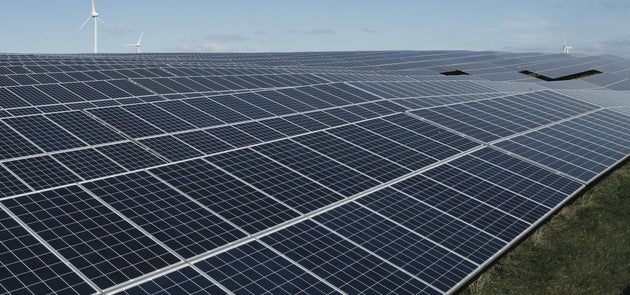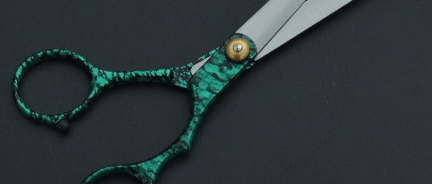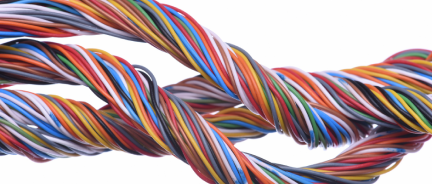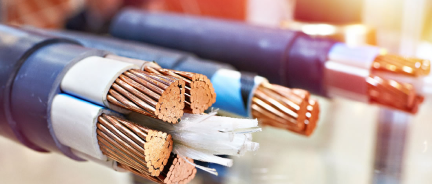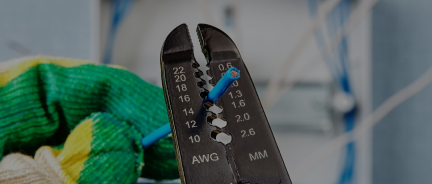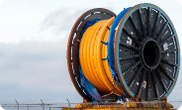How Deep Does An Electrical Wire Need To Be Buried?
As per requirements outlined in NEC Article 300.5 on underground installations, here are the standard burial depths of electrical cables:
-
UF-B Cable, USE-2, URD (Direct Burial) - 24 inches (600 mm)
-
THWN in PVC Conduit (under a driveway) -18 inches (450 mm)
-
THWN in PVC Conduit (lawn/soil only) -18 inches (450 mm)
-
Metal Conduit (Rigid or IMC)- 6 inches (150 mm)
-
Nonmetallic Conduit (Schedule 80 PVC) -18 inches (450 mm)
-
Low Voltage (≤30V, e.g., landscape lighting) -6 inches (150 mm)
-
GFCI-Protected 120V Circuit (with conduit)- 12 inches (300 mm)
Let's break down each of these underground installations in more detail:
Use Cases of Underground Electrical Cable Installations
UF-B (Direct Burial)
UF-B is exposed to soil without a conduit, so it needs more earth above for physical protection, hence the depth of 24 inches. In general, using UF-B is best for simple outdoor runs (e.g., powering a shed, garage, or landscape lighting) without conduit. You will most often use it in open soil or garden areas with no heavy traffic. UF-B is what you would use for residential areas for (120/240V) outdoor branch circuits.
Note: Not allowed under driveways, patios, or areas with vehicle load because it cannot survive the physical load required in these applications.
Other direct-burial cables (USE-2 and URD) are buried at 24 inches as well, using the same logic. They are, however, not allowed to have homeowner-installed indoor/outdoor branch circuits, and are primarily used by utilities. USE-2 is used for service entrance or feeder runs, and URD utility transformer to the meter base. If you are a homeowner doing a residential underground installation, it is best to avoid these cables as they are utility-grade, and local codes might not allow it.
THWN in Conduit
THHN/THWN are always used in conduit in underground installations, direct burial is not allowed. The minimum depth requirement is 18 inches (450 mm), regardless of the application, as conditions provide the installation with mechanical protection for a shallower trench.
Here are the common underground applications of THHN/THWN in conduit:
-
Underground branch circuits
To a detached garage, shed, pool panel, outdoor light pole, or gate motor.
-
Feeder circuits for subpanels
When powering a subpanel in a separate building or far from the main panel, especially across a yard or under concrete.
-
Applications where conduit is required for mechanical protection or routing flexibility, such as:
-
Areas with rocky or unstable soil
-
Long or curved wire runs across a property, if you need to run between trees and other structures on the property.
-
Routing under sidewalks, driveways, or slabs
-
Situations where you want to future-proof the run (i.e., pull new wire later)
Aside from these applications, you can use THHN/THWN-2 in conduit in general underground applications in place of UF-B if you simply want a shallower trench and don't want to dig 24 inches.
Types of Conduit For THHN/THWN in Underground Applications
THHN/THWN uses different conduits for different underground uses. Here is the rough guide:
-
Schedule 40 PVC (Plastic) is only used in lawn/soil areas with no vehicle traffic, so, general residential applications. It is not allowed for anything more complicated than that.
-
Schedule 80 PVC is a thicker-wall PVC required under traffic areas: driveways, parking areas, or where conduit is subject to damage.
-
Rigid Metal Conduit (RMC) is a heavy-duty conduit buried in a shallower trench of 6 inches. You can use it to reduce the depth of the installation further. You can use it anywhere, but especially under the slab, driveway, and in garages. This is because it is good at withstanding wet or corrosive soil. This is the heaviest and most expensive conduit. When used in rocky soil, RMC conduit might need concrete encasement.
-
Intermediate Metal Conduit (IMC) is similar to RMC, but lighter and cheaper. It is buried at 6" as well. It can be used anywhere, just as RMC.
THHN/THWN cannot be buried in other types of electrical conduit not listed here, as it corrodes in soil.
Metal Conduit (Rigid or IMC)
Metal Conduit (Rigid or IMC), which is buried at 6", can be used anywhere with different types of cables, but not with pre-assembled cable like UF-B or NM-B. Options that work well with metal conduit include XHHW / XHHW-2 and RHH / RHW-2. These combinations are mostly used in commercial applications, like commercial underground feeders.
Nonmetallic Conduit (Schedule 80 PVC)
Nonmetallic Conduit (Schedule 80 PVC) at 18 inches (450 mm) can be buried not just with THHN/THWN, but also with XHHW / XHHW-2, USE-2 (Single Conductor), RHH / RHW-2, and Photovoltaic (PV) wire. This type of conduit is used in required under driveways, parking areas, or paved surfaces. It is also notorious for its wet ranking.
Low Voltage (≤30V, e.g., landscape lighting)
Low-voltage cables in underground installations rated 30V or less include low-voltage landscape lighting cable, irrigation control wire, and thermostat/ bell wire. Landscape lighting cable and irrigation control wire can be buried directly, while thermostat wire requires conduit.
The applications of these low-voltage cables include:
-
Landscape lighting systems
-
Irrigation valve control wires
-
Gate or driveway sensor wiring
-
Doorbells or intercoms (if buried outdoors)
You can use these in residential applications, but make sure that the cables are rated for direct burial. Low-voltage cables for underground installations are prohibited in high-traffic areas and rocky soil.
GFCI-Protected 120V Circuit (with conduit)
A circuit that is 120V, GFCI-protected, 20A max, and installed in conduit in residential applications may be buried at 12 inches deep instead of 18 or 24 inches. This is because GFCI protection alone adds dramatically to safety. It rapidly cuts power when it detects current leakage — e.g., if a wire is damaged while digging. This is permitted only in limited, low-risk residential use, not in circuits over 120V and 20 amps. The cables cannot be used under driveways or parking, or in wet or flood-prone zones.
The NEC requires the use of individual conductors in conduit for a GFCI-protected 120V Circuit, so THHN/THWN, /XHHW / XHHW-2, or RHW-2 / RHH are recommended. Since this is only for residential low-risk use, PVC 40 will likely be the conduit of choice.
At Nassau National Cable, you can find all electrical cables for underground installations, including:
-
THHN/THWN-2 in conduit





